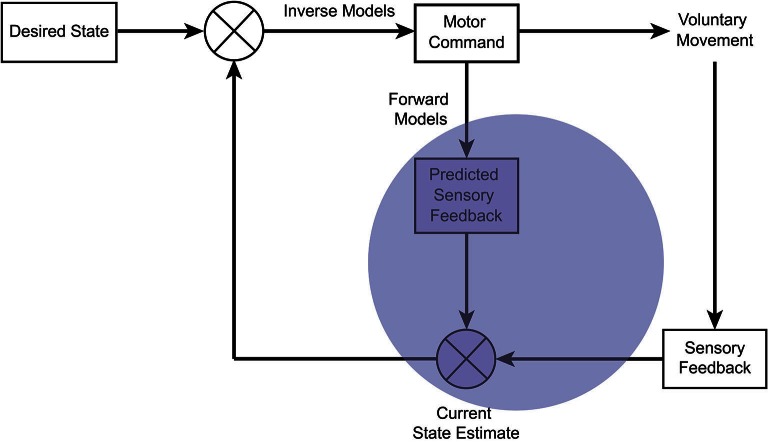Figure 2.
Schematic of the “comparator model” within optimal motor control theory. A prominent theory in motor control proposes the use of internal models, which represent the dynamics of the body in the environment. To generate a voluntary movement, the central nervous system represents a desired state of the body. This is compared with the estimated current state, and is converted to a motor command through inverse models by an optimal feedback controller, so as to minimize both the difference and the motor costs. An efference copy of the motor command is used by forward models to predict the sensory effect. The predicted sensory effect is compared and integrated with the actual sensory feedback from the moving body part to generate an optimal state estimate. According to the comparator model, the sense of agency arises from the comparison between the predicted and actual sensory feedback (opaque blue). When the discrepancy is small, the sensory effect is attributed to one’s own volition, but when the discrepancy is large, the sensory effect is interpreted as externally generated.

